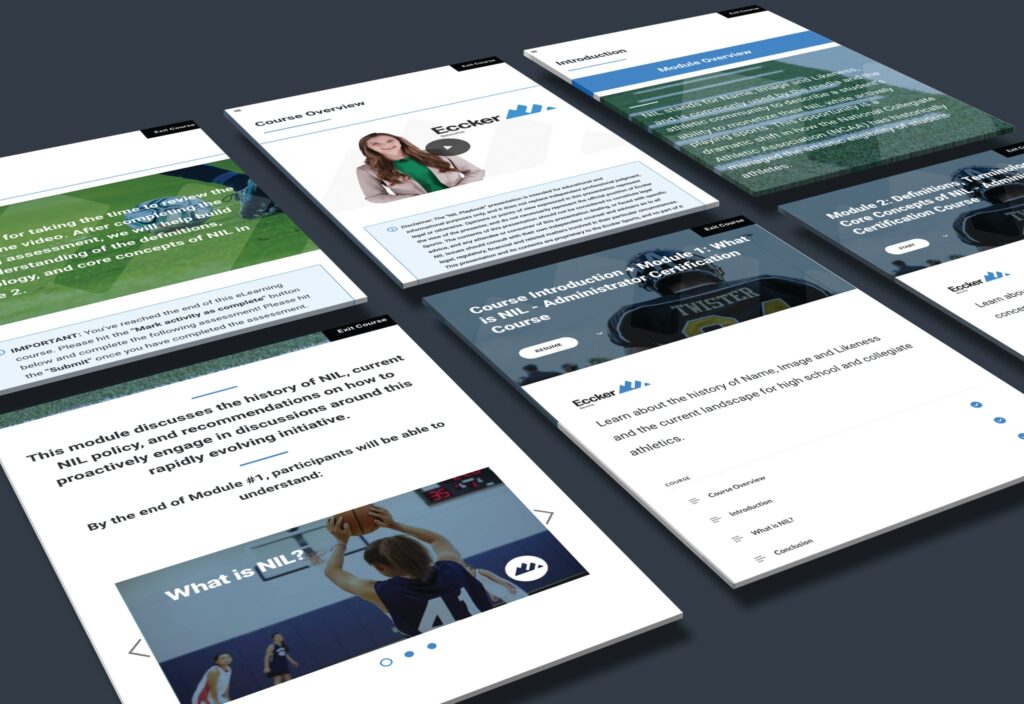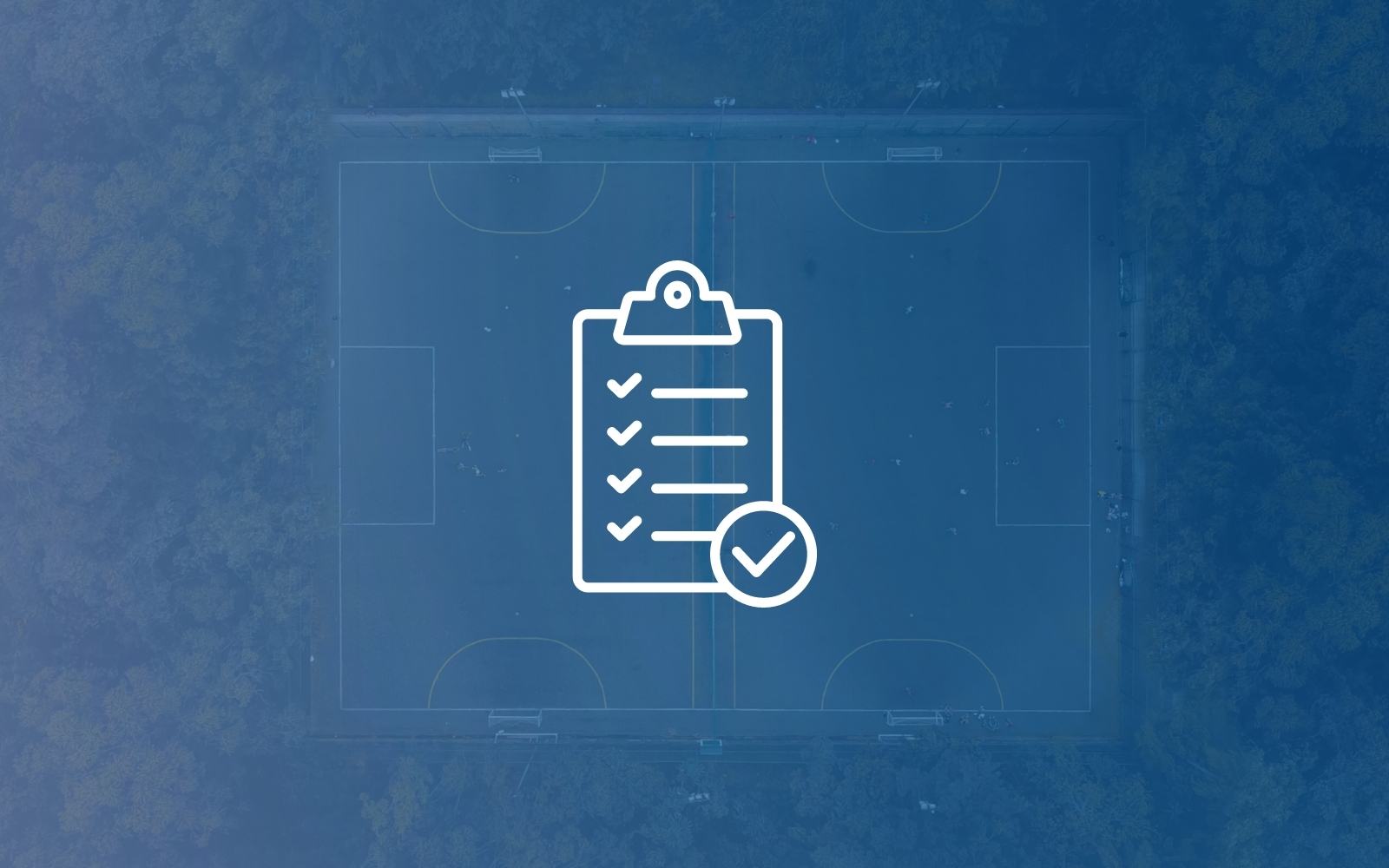Put me in Coach: Listening to coaches on NIL

Author: Tim Prukop, Co-Founder of Eccker Sports
The NIL disruption is spreading, and the conversations are heating up. Since we at Eccker Sports made the formal announcement of our information platform back in April, we’ve signed partnerships with five state athletic and coaches associations, and have had more than 150 individuals register and complete our Video Curriculum.
The momentum is building as summer arrives. Coaches are getting ready to think about fall sports and NIL is on their minds. We are listening and we think it’s important that others listen too. I wanted to amplify some of what we have heard in recent weeks.
Coaches want input
At this writing, we’ve talked with 140 high school coaches around the nation. I’ve been involved in many of those conversations, and they remind me of the classic five stages of grief that describe the process of dealing with some sort of loss. The analogy is not a perfect fit, but it’s a way of understanding where the coaches are coming from. With a slight modification to the classic list of stages, it feels like coaches express all five in a single conversation: denial, anger, bargaining, uncertainty about the future, and acceptance.
The conversations go something like this… (For the coaches reading this, do you see yourselves in any of this?)
-
- Denial: Coaches are very direct that they wish NIL was not happening. Some of them don’t want to talk about it at all because they think it will be a distraction. Others don’t talk about it because they really don’t know enough about it yet.
- Anger: Yes, some of them are angry. They feel decisions are made high – courts, state legislatures, etc. – and roll downhill into their locker rooms. They worry that competing schools will start recruiting their athletes using NIL deals and that kids will be exploited by professionals looking to make money off them.
- Bargaining: Once they acknowledge that they can’t ignore it, many of them have some great ideas. For instance, they think there should be rules in place for governing NIL at the district and state level that deal with concrete things like enticing families to move from one high school to another through better NIL deals. That can’t happen in all the states that have approved NIL, but it’s just one example of how the coaching view of NIL has practical impact.
- Uncertainty about the future: Many coaches are clearly worried about the near future. They don’t know what to tell their own coaching staffs or parents. They know the athletes and parents will turn to the coach for trusted information. If the coach can’t get accurate, vetted, up-to-date information, everyone will turn to social media and other unreliable sources where misinformation can be rampant.
- Acceptance: Most of these conversations end in a very different place than where they start. While it is clear that coaches unanimously do not want NIL ruining high school sports, they do recognize that they need to get educated so they can help their kids. Some are even energized that they really can limit the potential downsides so they can focus on the positive parts of NIL and play a role in making good things happen for their athletes.
These conversations remind me of the first discussions Randy Eccker and I had in 2021 after the court decisions that reshaped the NIL landscape. We are deeply passionate about sports at all levels, and we feared this disruption could sow some chaos in high school athletics where the resources and access to knowledge would be much more limited than in the college sphere. Going through our own version of these five stages, those conversations, as well as the threat of chaos, led to the Eccker Sports NIL information platform. We firmly believe the best way to protect the students is to arm the coaches with the resources and tools to properly guide the players and their families.
We all need the coach perspective
Coaches should play leading roles in establishing three key things at the school, district, and state athletic association level:
-
- Education: Everyone from administrators to parents and athletes need to understand what NIL is, how it works in your state and how it’s evolving across the nation.
- Governance: There will be legislation and rules in each state that will need to be administered and applied within each district and school.
- Visibility: All rules and processes need to be transparent so that everyone involved knows what’s going on and compliance can be built into the systems.
The coaches may voice many concerns about NIL, but they can also be a tremendous resource for state legislators and the executive directors of state athletic associations. I understand the concerns and frustrations. Being a coach is about focusing on what you can control. One of my learning moments as a coach was when I was at the University of Southern California. We were getting ready to play Notre Dame and I was breaking down tape to build a game plan. My boss came to me and asked why I looked so concerned. I told him that I knew what we needed to do, but the wild card was that I didn’t know what Notre Dame would do.“That’s out of your control,” he said. “Focus on the things you can control.”
It was sage advice. NIL may feel like it is coming out of nowhere. But, if everyone gets educated and works together, it can be brought under control. Let’s make it a positive experience for our students by focusing on the things we can control and mitigating any downsides from things that we cannot.
Need to understand NIL better? Sign up for our online Curriculum here.


